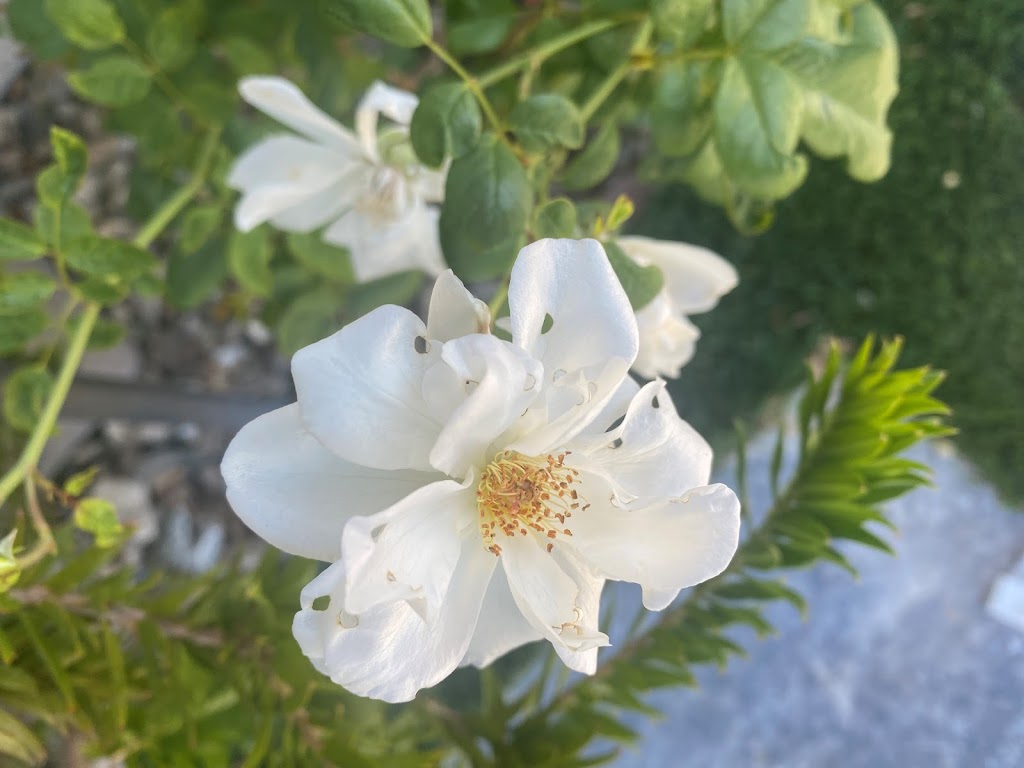‘Iceberg’ Roses are Older But Worth Planting in Las Vegas
Q. This may be a bit too amateurish for your column, but I need help with ‘Iceberg’ roses. I pulled the rock away and fertilized this past spring. I thought the roses I planted in pots would do better, but they don’t. I ask the nurseries when I go but get conflicting information. Why are there holes in the flowers? When I see dark leaves that look diseased, I pull them off. When I deadhead and trim back (5 sets of leaves), I sanitize the shears to not spread any potential disease from bush to bush. Is there anything else you see? Iceberg roses are an older rose but still valuable for planting in Las Vegas. A. Whenever I hear roses, my thoughts go to plant location relative to the house and soil enrichment. They are the most important. Make sure that any type of rose is a good 3 to 4 feet from any hot wall. Roses grow best in full sunlight with plenty of air movement or on East or North sides of homes in the hot Mojave Desert. During the planting season (never summer), the soil should be amended with compost and covered with a 2 to 3-inch layer of wood chips. The best woodchips to use are those that are chipped from local trees rather than a “bark” mulch. The true iceberg rose is a floribunda type that is worthy of containers in Las Vegas. Here it’s planted in a container but the soil must be changed, or at least renewed, every three or four years. The old-fashioned “Iceberg” rose is a bush rose (considered a Floribunda type), 3 to 4 foot tall and bearing medium-sized, white flowers in the spring and fall months here. Iceberg roses are pruned at the same time as other roses, usually in late January. The iceberg rose has been bred to be a climber (10 to 12 feet) in more recent years with the same color flowers and scent as the original 1958 rose. I don’t see a problem with this Rose except a lack of fertilizer and water. Diseases and insects of roses in our Mojave desert climate include powdery mildew, iron deficiency, bacterial galls, spider mites, thrips, and cane borers. Try fertilizing 3 to 4 times each year during the cool months, in the first fertilizer application (spring) include an iron fertilizer, and water the plant twice a day during the heat of the summer months and it’s in a small container. If you suspect an insect or disease, ask for a Rosarian on the Master Gardener helpline, describe the problem you are having with your roses and follow their advice.
‘Iceberg’ Roses are Older But Worth Planting in Las Vegas Read More »
